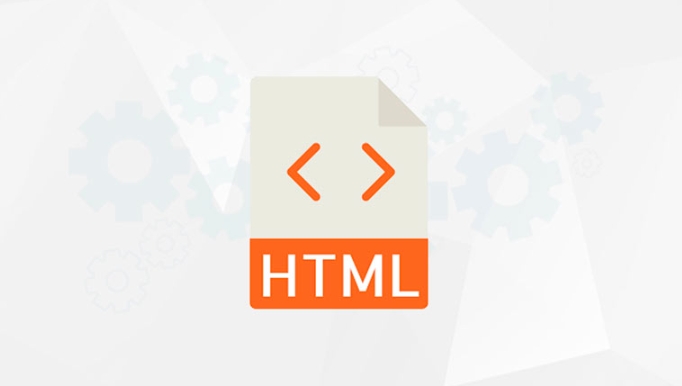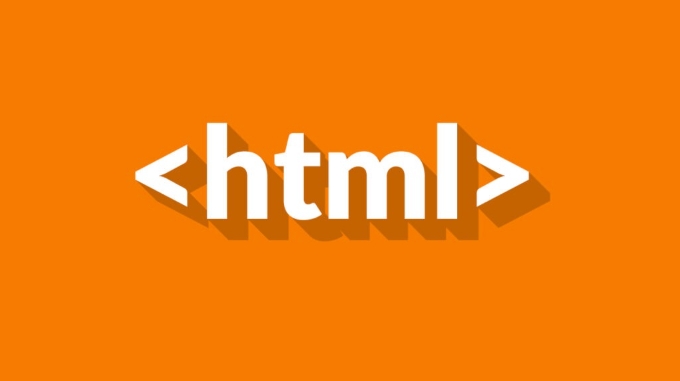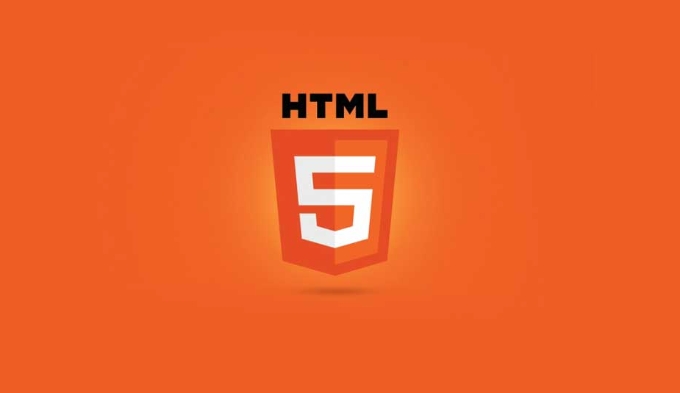Structuring data with the HTML ``, ``, `` description list.
Jul 03, 2025 am 02:16 AMUse the
<dl>, <dt> and <dd> tags of HTML to display terms and their definitions, product features, or key-value pairs clearly and semantically. 1. It is suitable for scenarios such as vocabulary, metadata (such as file details), FAQs and product specifications; 2. A <dl> wraps multiple <dt> (terms) and <dd> (descriptions) on the structure, which can support multiple interpretations for one term; 3. When used correctly, avoid wrapping each group of items in their respective <dl>, and should not nest titles or paragraphs in them; 4. Styles can be added through CSS to improve readability, such as setting spacing, indentation, font bolding, or using flex/grid layout. This structure is not only concise and clear, but also improves the accessibility and SEO effect of the web page.
Sometimes you may need a way to display terms and their definitions, product features, or other key-value pairs in a clean and semantic way. The HTML <dl></dl> , <dt></dt> , and <dd></dd> tags are perfect for this — they're underused but incredibly useful when applied correctly.
 `, `<dt> `, `
<dd> ` description list." />
`, `<dt> `, `
<dd> ` description list." />What is a description list?
A description list ( <dl></dl> ) is a structured way to present a list of terms ( <dt></dt> ) and their corresponding descriptions ( <dd></dd> ). Unlike unordered or ordered lists, it's designed specifically for pairing labels with explanations.
 `, `
<dt> `, `
<dd> ` description list." />
`, `
<dt> `, `
<dd> ` description list." />You'll often see it used in glossaries, FAQs, or even metadata displays (like on product pages). It's not just about how things look — using the right tags improves accessibility and SEO by clearly defining relationships between terms and their descriptions.
When should you use it?
Use a description list when:
 `, `
<dt> `, `
<dd> ` description list." />
`, `
<dt> `, `
<dd> ` description list." />- You're listing terms and definitions (eg, a glossary)
- Displaying metadata like file details (size, type, date modified)
- Presenting frequently asked questions and answers
- Showing product specs (color, size, price, etc.)
It's especially handy when you have multiple items that each need a label and explanation. For example:
- A settings panel where each setting has a name and value
- An API documentation page showing parameters and what they do
- A contact section with labeled info like phone, email, address
How to structure it properly
The basic structure looks like this:
<dl> <dt>Term 1</dt> <dd>Description for Term 1</dd> <dt>Term 2</dt> <dd>Description for Term 2</dd> </dl>
Each <dt> represents a term, and each <dd> gives its definition or explanation. You can have more than one <dd> per <dt> if needed — for example, if a word has multiple meanings.
One thing people sometimes miss: don't wrap each pair in a separate <dl> . Just one <dl> wraps all the pairs. Also, avoid putting headers or paragraphs inside — keep it simple and semantic.
Styling tips
By default, browsers apply minimum styling, so you'll probably want to add some CSS. Here are a few quick suggestions:
- Add spacing between each term-description pair
- Indent the
<dd>elements slightly for visual hierarchy - Make
<dt>bold or change font weight to stand out - Use flexbox or grid to align them side-by-side on larger screens
For example:
dl {
display: grid;
grid-template-columns: max-content auto;
gap: 0.5em;
line-height: 1.5;
}
dt {
font-weight: bold;
}This helps create a clean layout without relying on extra divs or wrappers.
Basically that's it. It's a straightforward element set once you get the hang of it — and when used appropriately, it makes your markup cleaner and more meaningful.
The above is the detailed content of Structuring data with the HTML ``, ``, `` description list.. For more information, please follow other related articles on the PHP Chinese website!

Hot AI Tools

Undress AI Tool
Undress images for free

Undresser.AI Undress
AI-powered app for creating realistic nude photos

AI Clothes Remover
Online AI tool for removing clothes from photos.

Clothoff.io
AI clothes remover

Video Face Swap
Swap faces in any video effortlessly with our completely free AI face swap tool!

Hot Article

Hot Tools

Notepad++7.3.1
Easy-to-use and free code editor

SublimeText3 Chinese version
Chinese version, very easy to use

Zend Studio 13.0.1
Powerful PHP integrated development environment

Dreamweaver CS6
Visual web development tools

SublimeText3 Mac version
God-level code editing software (SublimeText3)

Hot Topics
 How do I minimize the size of HTML files?
Jun 24, 2025 am 12:53 AM
How do I minimize the size of HTML files?
Jun 24, 2025 am 12:53 AM
To reduce the size of HTML files, you need to clean up redundant code, compress content, and optimize structure. 1. Delete unused tags, comments and extra blanks to reduce volume; 2. Move inline CSS and JavaScript to external files and merge multiple scripts or style blocks; 3. Simplify label syntax without affecting parsing, such as omitting optional closed tags or using short attributes; 4. After cleaning, enable server-side compression technologies such as Gzip or Brotli to further reduce the transmission volume. These steps can significantly improve page loading performance without sacrificing functionality.
 How has HTML evolved over time, and what are the key milestones in its history?
Jun 24, 2025 am 12:54 AM
How has HTML evolved over time, and what are the key milestones in its history?
Jun 24, 2025 am 12:54 AM
HTMLhasevolvedsignificantlysinceitscreationtomeetthegrowingdemandsofwebdevelopersandusers.Initiallyasimplemarkuplanguageforsharingdocuments,ithasundergonemajorupdates,includingHTML2.0,whichintroducedforms;HTML3.x,whichaddedvisualenhancementsandlayout
 How do I use the element to represent the footer of a document or section?
Jun 25, 2025 am 12:57 AM
How do I use the element to represent the footer of a document or section?
Jun 25, 2025 am 12:57 AM
It is a semantic tag used in HTML5 to define the bottom of the page or content block, usually including copyright information, contact information or navigation links; it can be placed at the bottom of the page or nested in, etc. tags as the end of the block; when using it, you should pay attention to avoid repeated abuse and irrelevant content.
 How do I use the tabindex attribute to control the tab order of elements?
Jun 24, 2025 am 12:56 AM
How do I use the tabindex attribute to control the tab order of elements?
Jun 24, 2025 am 12:56 AM
ThetabindexattributecontrolshowelementsreceivefocusviatheTabkey,withthreemainvalues:tabindex="0"addsanelementtothenaturaltaborder,tabindex="-1"allowsprogrammaticfocusonly,andtabindex="n"(positivenumber)setsacustomtabbing
 What is the declaration, and what does it do?
Jun 24, 2025 am 12:57 AM
What is the declaration, and what does it do?
Jun 24, 2025 am 12:57 AM
Adeclarationisaformalstatementthatsomethingistrue,official,orrequired,usedtoclearlydefineorannounceanintent,fact,orrule.Itplaysakeyroleinprogrammingbydefiningvariablesandfunctions,inlegalcontextsbyreportingfactsunderoath,andindailylifebymakingintenti
 How do I use the and elements to provide a caption for an image?
Jun 24, 2025 am 12:45 AM
How do I use the and elements to provide a caption for an image?
Jun 24, 2025 am 12:45 AM
The standard way to add titles to images in HTML is to use and elements. 1. The basic usage is to wrap the image in the tag and add a title inside it, for example: this is the title of the image; 2. The reasons for using these two tags include clear semantics, convenient style control, and strong accessibility, which helps the browser, crawler and screen readers to understand the content structure; 3. Notes include that it can be placed up and down but needs to maintain logical order, cannot replace the alt attribute, and can contain multiple media elements to form a whole unit.
 What is the loading='lazy' one of the html attributes and how does it improve page performance?
Jul 01, 2025 am 01:33 AM
What is the loading='lazy' one of the html attributes and how does it improve page performance?
Jul 01, 2025 am 01:33 AM
loading="lazy" is an HTML attribute for and which enables the browser's native lazy loading function to improve page performance. 1. It delays loading non-first-screen resources, reduces initial loading time, saves bandwidth and server requests; 2. It is suitable for large amounts of pictures or embedded content in long pages; 3. It is not suitable for first-screen images, small icons, or lazy loading using JavaScript; 4. It is necessary to cooperate with optimization measures such as setting sizes and compressing files to avoid layout offsets and ensure compatibility. When using it, you should test the scrolling experience and weigh the user experience.
 How do I use the element to represent a section of navigation links?
Jun 24, 2025 am 12:55 AM
How do I use the element to represent a section of navigation links?
Jun 24, 2025 am 12:55 AM
The key to using elements to represent navigation link areas is semantics and clear structure, usually in conjunction with organizational links. 1. The basic structure is to put the parallel links in and wrap them inside, which is friendly to auxiliary tools and is conducive to style control and SEO; 2. Commonly used in or, for placing main navigation or footer link collections; 3. A page can contain multiple areas, such as main menu, sidebar or footer independent navigation.






